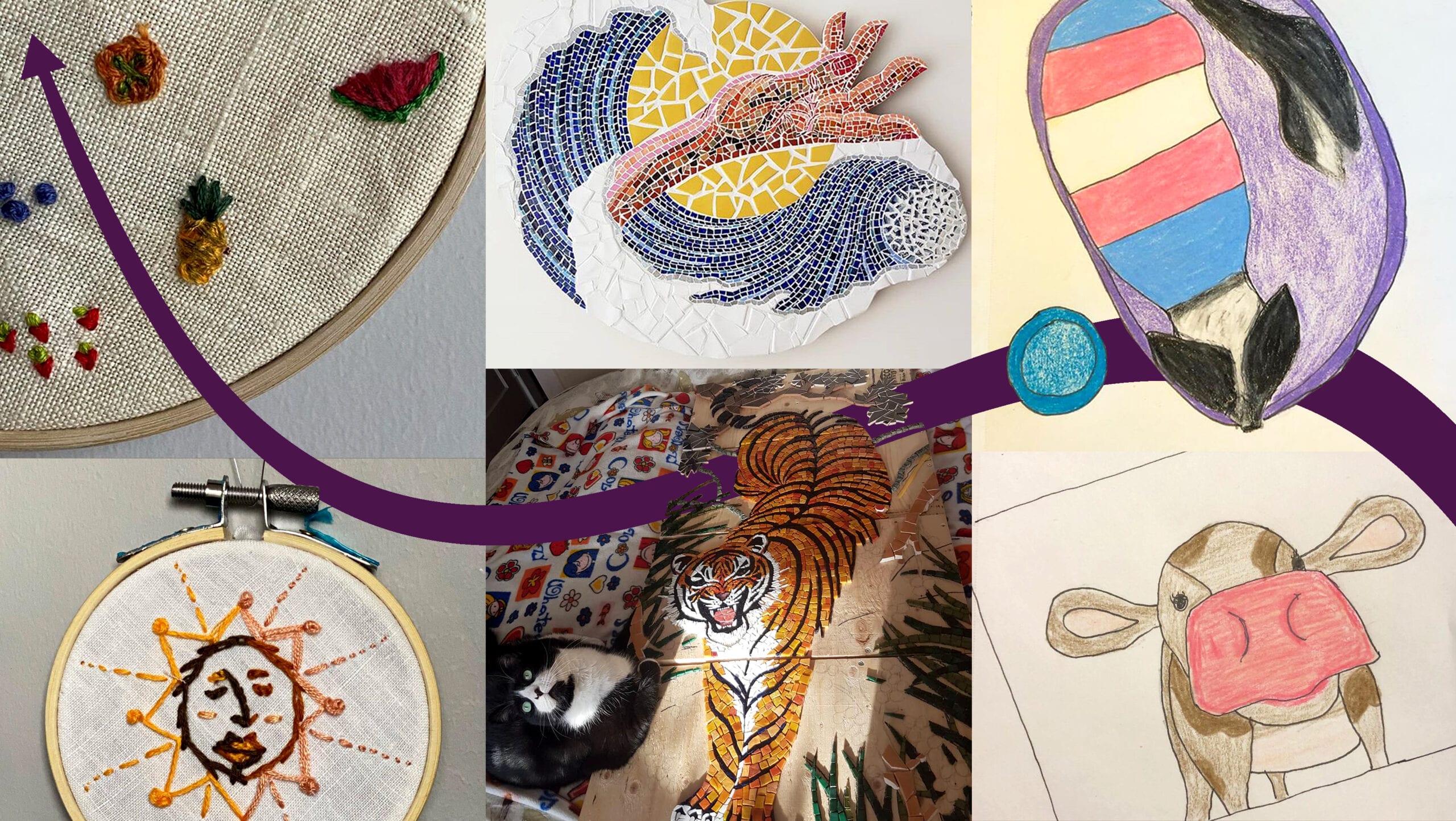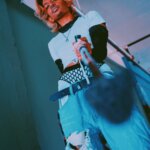This story is part of Your Communities In Action, a continuing series on LGBTQ2 folks coping and caring for each other during the COVID-19 crisis.
During these chaotic times, it can be difficult to stay connected to your communities while in isolation. But if there is anything that disabled artists are familiar with, it’s how to survive social isolation.
Here are five disabled artists who are keeping their community together and helping us find healing through creativity.
Challenge yourself with Sticky Mangos
AdvertisementView this post on Instagram
A post shared by Sticky Mangos (@stickymangos) on
Queer disabled multidisciplinary artist Pree Rehal—better known online as Sticky Mangos—considers creating art a part of their pain management. It’s a way to not just distract themselves from the pain, but also to experience something that makes them feel good.
To help others experience that same great feeling, they created the Queerentine Art Challenge on Instagram—a routine-building exercise and a coping strategy. The challenge consists of daily one-word prompts that artists can use to inspire a creative work while they are isolated. Anyone can follow along on social media using #QueerentineAC. The hashtag seems to be catching on: Performance artist Naty Tremblay, for instance, is making daily performance videos based on the prompts, while Toronto artist Tygr Willy is using the challenge as an opportunity to show off their intricate makeup looks.
But there’s no pressure: Rehal also wants anyone participating to remember that it’s okay to schedule in rest days, start late or restart the challenge any time. After all, it’s meant to be a healing practice.
A virtual open studio hour with Wy Joung Kou
View this post on Instagram
A post shared by Wy Joung Kou (@okkouu) on
When Wy Joung Kou, a disabled multidisciplinary artist who works primarily with mosaics, had to start following social distancing protocol, they decided to bring an audience to their studio—virtually.
Every weekday for about an hour, Kou livestreams their mosaic-making process, answering questions about the medium along the way. Now, the stream has evolved intoa space where other artists simultaneously create art. It’s a place where artists don’t necessarily have to engage with others but can still hold each other accountable in making their art.
Kou will be continuing their livestream on their Instagram weekdays from 2-3 p.m. EST.
Getting crafty with Kate Welsh
AdvertisementView this post on Instagram
A post shared by Kate Welsh (@queerkate) on
Before having to quarantine for her own health, Kate Welsh used to be a part of a close-knit weekly crafting group that would meet in-person to craft together and socialize; she would occasionally teach a craft. Welsh, a community organizer and disabled artist who facilitates practical arts and crafts workshops, had to get creative to keep the group going.
So, she switched to hosting the craft nights over the videoconferencing service Zoom. Like Kou’s virtual studio, it is meant to be a space where queer craftspeople can create together and participate in a show-and-tell to a small, friendly audience. The livestreams are going so well that Welsh is now considering offering another weekly night specifically for disabled artists to create together.
Getting your play on with Crips Do it Better
Some disabled artists are connecting in other creative ways—wink wink. Crips Do it Better, for instance, is an online play party meant to help people safely meet and play while social distancing. Organized by a group of disabled artists, it features an online space where people can watch performers, listen to music and send messages to new people; there’s also the option to move to private “rooms” to flirt or play. While disabled people are often the subject of desexualization and often can’t attend play parties because of inaccessible venues, this party takes advantage of the newfound popularity of Zoom clubs to make a space where disabled folks can claim their sexualities.
Finding support with the COVID-19 Isolation Relief Support Line
The stress and anxiety of this pandemic is palpable for all, but especially those most vulnerable in our communities. That’s where Valentin Brown is stepping in. Brown, a trans, autistic and Mad artist whose work has focused on his lived experience and connecting in new ways has teamed up with a social worker in Hamilton, Ontario, and a group of volunteers to begin operating a support line for those experiencing social isolation. While he emphasizes that it isn’t a crisis line, it was developed to be operated under the values of disability justice.
Those in need can call or text 289-804-2343 weekdays between 6-9 p.m. EST for support.
Legacy: April 2, 2020 12:26 pmThe story has been updated to better reflect the collaborative nature of the COVID-19 Isolation Relief Support Line.


 Why you can trust Xtra
Why you can trust Xtra


